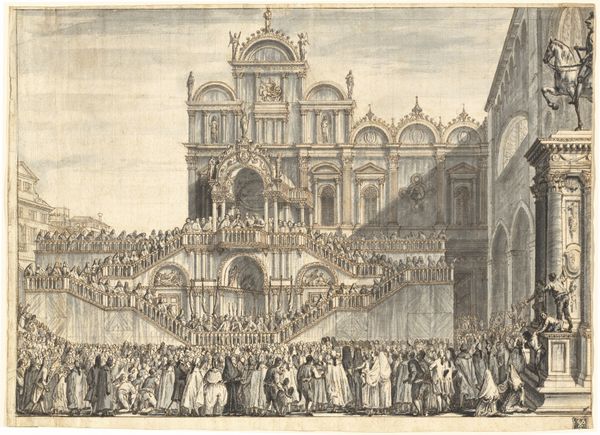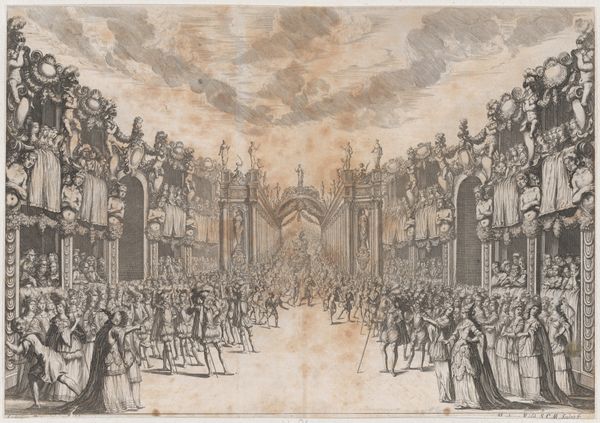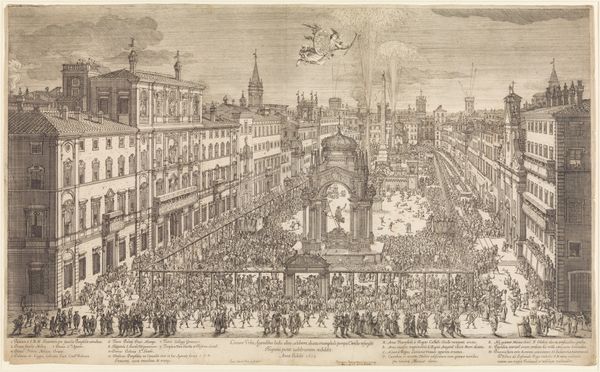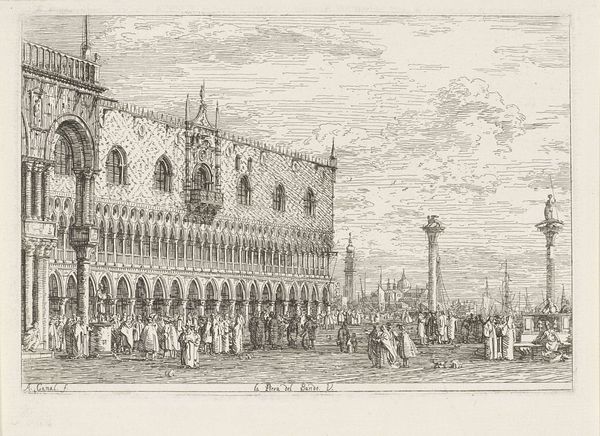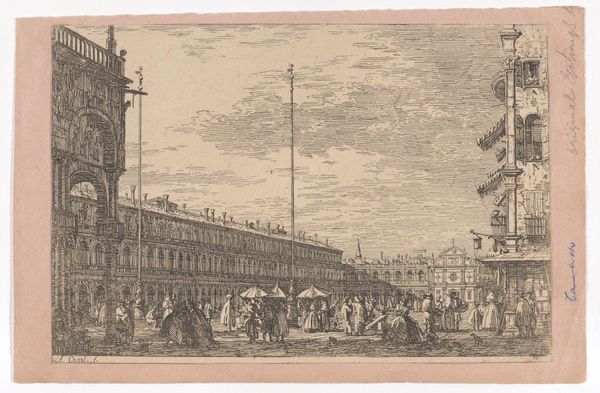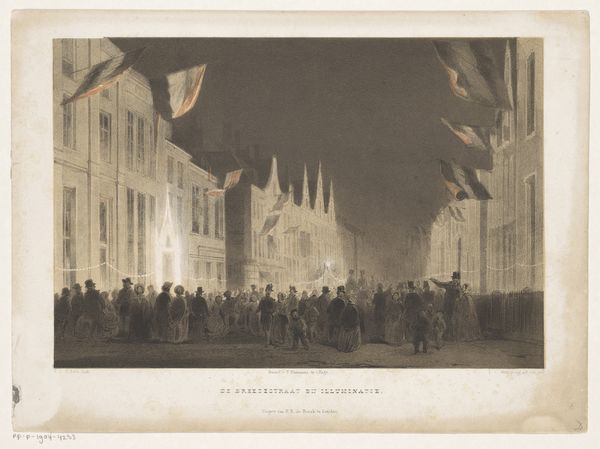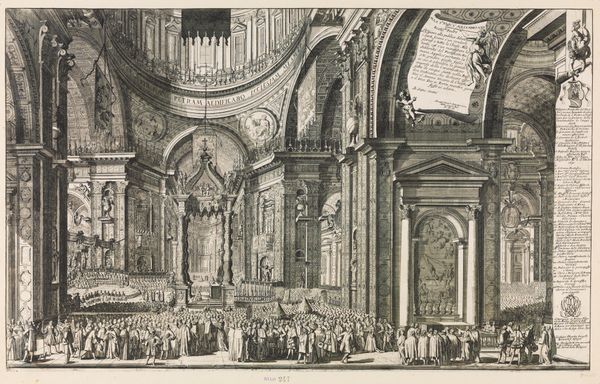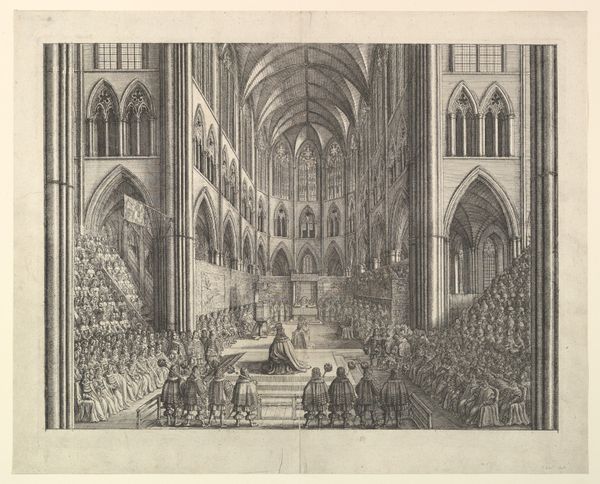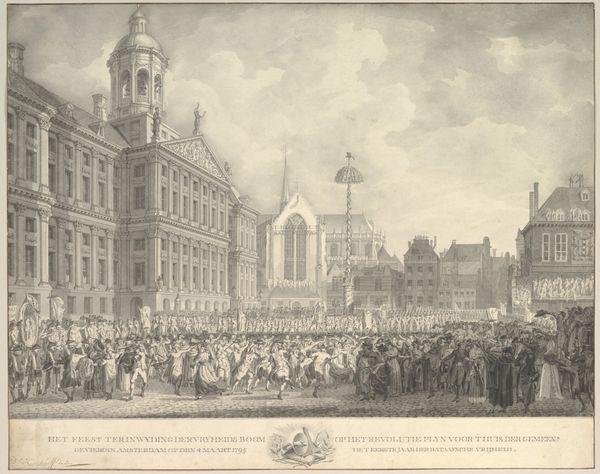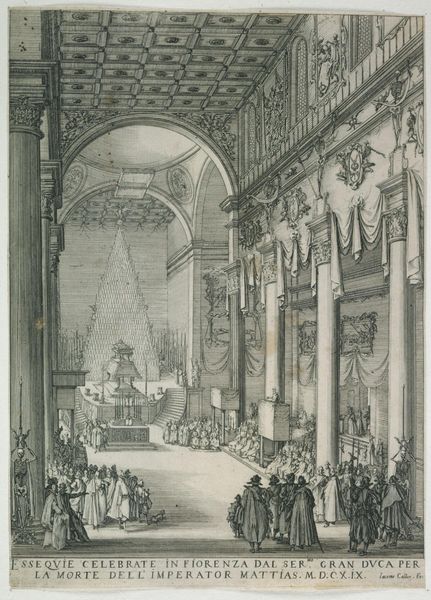
The "Giovedì Grasso" Festival before the Ducal Palace in Venice 1765 - 1766
0:00
0:00
Dimensions: sheet: 38.6 x 55.5 cm (15 3/16 x 21 7/8 in.)
Copyright: National Gallery of Art: CC0 1.0
Curator: Canaletto's rendering of "The 'Giovedì Grasso' Festival before the Ducal Palace in Venice," likely created between 1765 and 1766 using ink, watercolor, and etching, plunges us right into the heart of Venetian revelry. What's your first take? Editor: A swirling pageant of forms! My immediate impression is one of a tightly choreographed spectacle, all rendered in subdued washes that emphasize the architecture more than the people themselves. The materiality really hits you—the heavy, aged paper contrasting with the crisp lines. Curator: Exactly! The architectural rendering of the Doge's Palace and that temporary pavilion has an obsessive quality—almost like he’s more enraptured with the stones than the party unfolding. One can feel the precision of each brick! I see a spirit that transcends time, connecting us with that historical moment. Does it resonate similarly for you? Editor: I do, but through a different lens. I'm intrigued by Canaletto's deliberate choice to highlight these imposing structures while almost flattening the human figures. It whispers to me about the Republic's power, displayed and reinforced through orchestrated public events, consumed en masse. I wonder, what of the actual production, of preparing for such lavish festivals? Where is that labor represented? Curator: A lovely point—we tend to overlook the back-stage buzz! However, I find it is also capturing the ephemeral nature of joy. The subdued colors speak not just of architectural prowess but a quiet understanding that even the wildest of parties is fleeting. It reminds me of my grandmother’s smile, a poignant memory fading at the edges, as the watercolor surely will... Editor: The fading also gets me thinking. Consider how the materials themselves would be obtained and the cost, or relative worth, in Venice at the time. Pigments, paper… they are tied up in social hierarchies. Those fleeting moments of joy rested on unseen, considerable resources. Curator: Such is life; ephemeral joy, costly foundations. Perhaps Canaletto unconsciously echoed that paradox. What I draw from the art, looking again now, is the knowledge that it all—the revelry, the power, the architecture—morphs, shifts, alters with the passage of time, becoming more valuable because of its historical richness, its patina. Editor: Absolutely, an important lesson. A complex rendering!
Comments
No comments
Be the first to comment and join the conversation on the ultimate creative platform.

